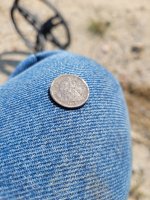MalteseFalcon
Bronze Member
- Aug 17, 2005
- 1,338
- 100
My 3 times great grandfather was killed fighting for the Confederacy at the Battle Of Pea Ridge in Northwestern Arkansas in March of 1862.
I was looking at aerial views of the modern day battlefield using Microsoft's Virtual Earth just now, and seeing all the open fields surrounding the Park Service property, I wondered what would happen if I googled "Metal detecting around Pea Ridge battlefield".
Here is the result. Not totally what I was looking for, but I figured you all might find it interesting. This guy is into the European way of thinking when it relates to metal detecting as an additional tool for archaeologists to use:
http://www.archaeology.org/online/interviews/scott.html
And then I found this concerning Pea Ridge:
http://www.nps.gov/history/mwac/wicr_peri/field_methods.htm
I was looking at aerial views of the modern day battlefield using Microsoft's Virtual Earth just now, and seeing all the open fields surrounding the Park Service property, I wondered what would happen if I googled "Metal detecting around Pea Ridge battlefield".
Here is the result. Not totally what I was looking for, but I figured you all might find it interesting. This guy is into the European way of thinking when it relates to metal detecting as an additional tool for archaeologists to use:
http://www.archaeology.org/online/interviews/scott.html
And then I found this concerning Pea Ridge:
http://www.nps.gov/history/mwac/wicr_peri/field_methods.htm
Upvote
0



